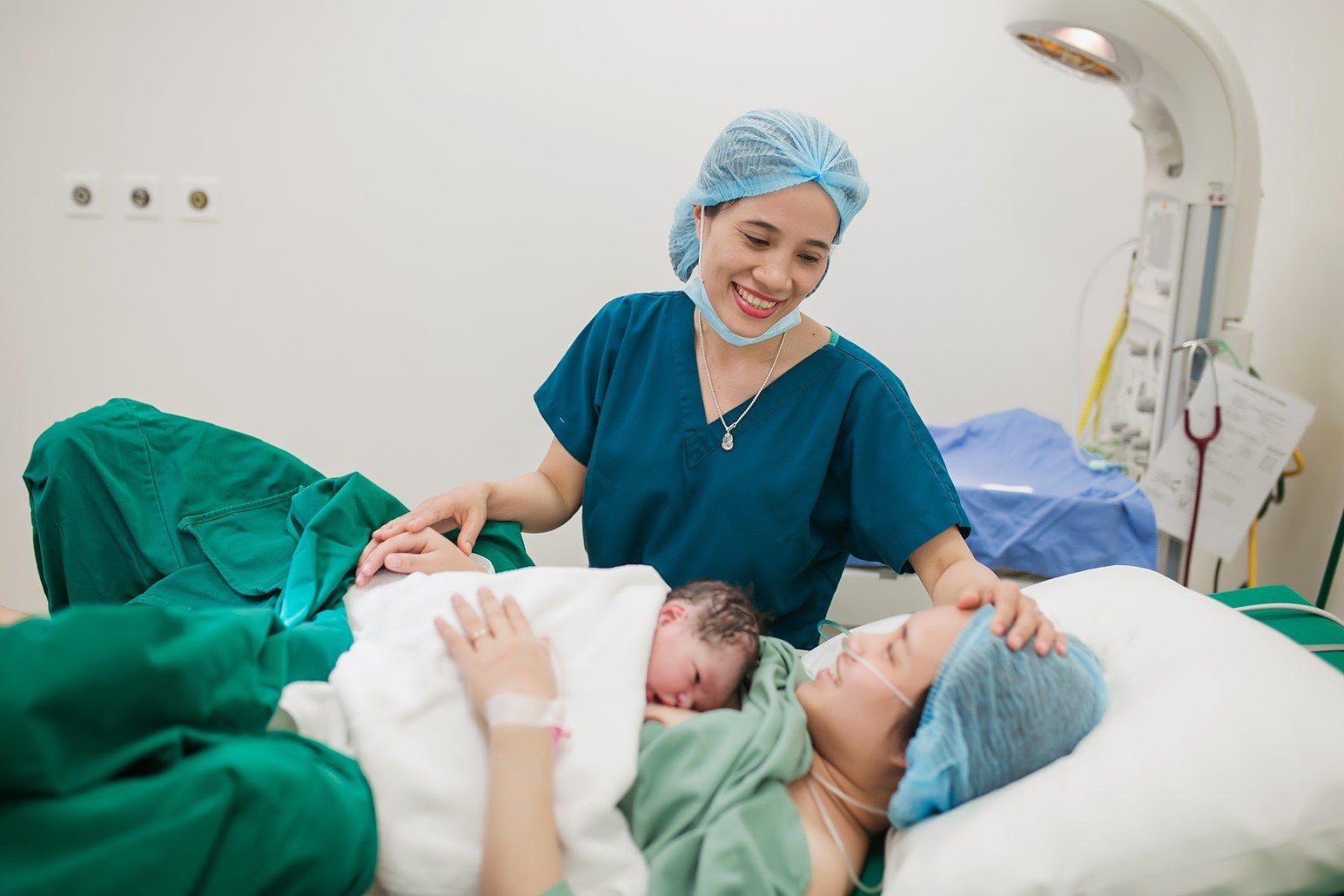Having uterine fibroids during pregnancy: Should I give birth naturally or by cesarean section?
The article is professionally consulted by Master, Doctor Nguyen Thi Hong On - Obstetrician and Gynecologist - Department of Obstetrics and Gynecology - Vinmec Phu Quoc International General Hospital.
Being pregnant for 9 months and 10 days is a magical but also extremely challenging journey for every mother, especially for those women who unfortunately have uterine fibroids during pregnancy. So, can I have a normal delivery if I have uterine fibroids during pregnancy?
1. What are uterine fibroids?
Uterine fibroids are tumors that grow in the wall of the uterus. It is the most common gynecological disease in women of reproductive age between 30 and 50 years old. Fibroids are almost always benign; Tumor size can be as small as a pea or it can be much larger. They can develop outside the uterine wall, inside the uterine cavity, or inside the uterine wall.
According to statistics from the journal Womenshealth, about 20-80% of women develop fibroids in their 40s and early 50s. Not all women with fibroids have symptoms. Some have pain and heavy menstrual bleeding. Fibroids can also put pressure on the bladder, causing frequent urination, or the rectum, causing rectal pressure. If fibroids become very large, they can cause the abdomen to enlarge, making a woman look pregnant.

U xơ tử cung
2. Causes of uterine fibroids
The cause of the disease is being studied, a number of risk factors: Genetics, environment, food, endocrine disorders, obesity... In which, most studies suggest that hormones Estrogen in the female body is involved in the formation and growth of tumors.
3. Uterine fibroids in pregnant women
Uterine fibroids often increase in size during pregnancy due to pregnancy hormones and often shrink after birth.
According to a 2010 review in the health journal Healthline, 10-30% of women with fibroids develop complications during pregnancy. The most common complication of fibroids during pregnancy is pain, the researchers note. It is often seen in women whose fibroids are larger than 5 cm in the last two trimesters.
Most fibroids don't grow while you're pregnant, but if they do, it's most likely in the first 3 months of pregnancy. Fibroid growth can be affected by increased estrogen levels during pregnancy. However, for other women, fibroids can actually shrink during pregnancy. Researchers have found that 79% of fibroids are present before pregnancy and decrease in size after birth.
Fibroids can increase the risk of other complications during pregnancy and delivery, including:
Fetal growth restriction: Large fibroids can prevent the fetus from fully developing by reducing its size in the womb. Placental abruption: This occurs when the placenta breaks loose from the wall of the uterus because it is blocked by a fibroid. This reduces oxygen and vital nutrients. Premature birth: Pain from fibroids can lead to uterine contractions, which can lead to premature birth. Abnormal pregnancy. Due to the irregular shape of the uterus Miscarriage: Women with fibroids have a higher risk of miscarriage during early pregnancy than women of normal range.

Trẻ có thể bị sinh non
4. Having uterine fibroids during pregnancy: Should you give birth naturally or by caesarean section?
In many cases, when women have uterine fibroids during pregnancy, they are benign, so the possibility of complications during childbirth is low, and women can still give birth normally. However, many cases of uterine fibroids increase the rate of caesarean section. That could be because fibroids can keep your uterus from contracting and the tumor can also block your birth canal, slowing down labor. Therefore, periodic examination of uterine fibroids during pregnancy is essential to ensure the safety of both mother and baby.
Uterine fibroids in pregnancy often do not remove fibroids, but only follow-up postpartum. Uterine fibroid surgery during pregnancy or delivery is indicated if the fibroids are complicated by necrosis, infection, or the fibroids are located at the uterine myometrial incision during cesarean section, or the fibroids cause complications. Obstruction of the outflow tract of fluid or fibroids located under the mucosa (invasion of the uterine lumen, risk of bleeding).

Sử dụng dịch vụ thai sản trọn gói giúp mẹ bầu an tâm
Robotic laparoscopic surgery for uterine fibroids is considered the leading method today for uterine fibroids. Currently, this method is being used by Vinmec International General Hospital.
Để đặt lịch khám tại viện, Quý khách vui lòng bấm số HOTLINE hoặc đặt lịch trực tiếp TẠI ĐÂY. Tải và đặt lịch khám tự động trên ứng dụng MyVinmec để quản lý, theo dõi lịch và đặt hẹn mọi lúc mọi nơi ngay trên ứng dụng.
Bài viết này được viết cho người đọc tại Sài Gòn, Hà Nội, Hồ Chí Minh, Phú Quốc, Nha Trang, Hạ Long, Hải Phòng, Đà Nẵng.






